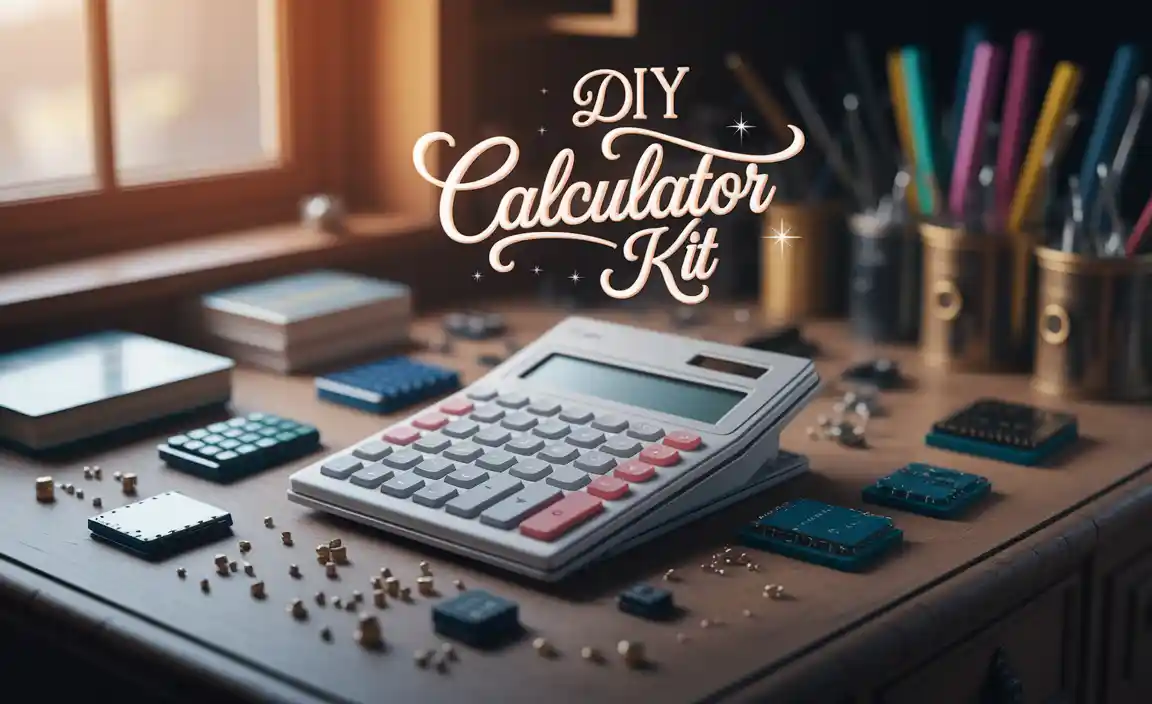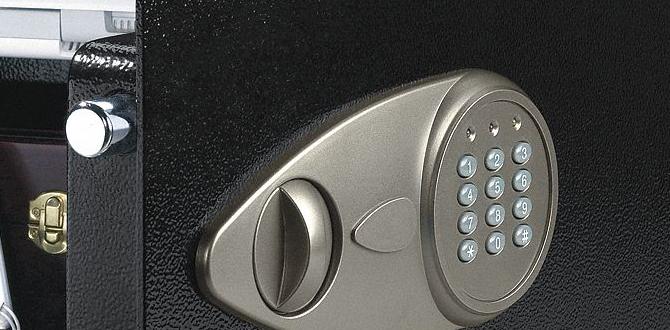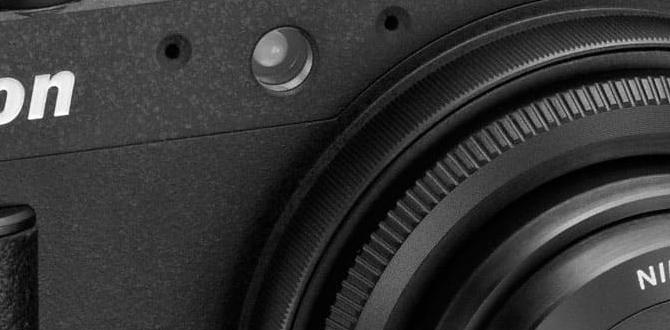What weight nailer is comfortable? The most comfortable nailer for you will depend on its type, power source, and your personal build and the task at hand. Lighter tools driven by batteries or gas offer great mobility, while heavier pneumatic models can be more balanced for extended use.
Working on DIY projects is exciting, but sometimes the tools can be a bit much. Have you ever picked up a nail gun and felt like you were wrestling a bear? It’s a common problem! The weight of a nailer can make a big difference in how long you can work and how comfortable you feel. Too heavy, and your arms get tired fast. Too light, and it might not have the power you need.
This guide is here to help you find that sweet spot. We’ll break down what makes a nailer comfortable, look at different types, and give you tips to make sure your next project is a breeze. No more arm fatigue or struggling with heavy equipment! Let’s find the perfect nailer for you.
—
Table of Contents
Understanding Nailer Comfort: It’s More Than Just Weight
When we talk about a “comfortable” nailer, it’s easy to just think “lighter is better.” And while weight is a huge part of it, there are other factors that contribute to how a nailer feels in your hands. Think of it like a comfortable pair of shoes – it’s not just about how light they are, but also how they fit, how they support your foot, and how they feel during long walks.
The Role of Weight and Balance
The sheer ounces and pounds of a tool add up, especially when you’re holding it overhead or in awkward positions. A nailer that’s too front-heavy or back-heavy can feel awkward and put extra strain on your wrists and arms. Many modern nailers are designed with balance in mind, so even if they have a bit of heft, they feel more natural to wield.
Power Source Matters
The way a nailer is powered plays a big role in its weight and handling:
- Pneumatic (Air-Powered): These need an air compressor and hose. The compressor itself is heavy and stays on the ground, but the hose can sometimes snag or feel restrictive. The nailer itself can be lighter, but you have to manage the hose.
- Cordless Electric (Battery-Powered): These are very popular because they offer great freedom. The battery adds some weight, but it’s usually well-balanced within the tool.
- Fuel Cell (Gas/Battery Powered): Found in framing and large construction nailers, these use a small fuel cell and a battery. They are often self-contained but can be a bit heavier due to the fuel system.
- Electric (Corded): Less common for nailers but exist for some smaller brad nailers. The cord can be a nuisance, and they might not have the power for tougher jobs.
Ergonomics and Grip
Beyond weight, how the nailer feels in your hand is key. A good ergonomic grip means the handle is comfortable to hold for extended periods, and the trigger is easy to pull without straining your finger. Soft rubber grips can absorb some vibration, making the tool feel smoother.
Types of Nailers and Their Typical Weights
Different jobs call for different nailers. The size and strength needed for framing a house are very different from those needed for delicate trim work. This naturally leads to differences in their size, power, and, of course, weight.
Framing Nailers
These are the heavyweights, designed to drive large nails for structural work like building walls, roofs, and decks. Since they need a lot of power, they tend to be larger and heavier.
- Pneumatic Framing Nailers: Often weigh between 7 to 10 pounds. They are powerful but can be physically demanding due to their size and the need for an air setup.
- Cordless Framing Nailers: These can range from 8 to over 12 pounds, especially with the battery included. They offer portability but can feel heavier in hand due to the integrated battery.
Finish Nailers
Used for attaching trim, baseboards, door casings, and crown molding, finish nailers drive slimmer nails (like brad nails or finish nails) that leave smaller holes. They are much lighter and more maneuverable.
- Pneumatic Finish Nailers: Typically weigh between 3 to 5 pounds. They are easy to handle and ideal for detailed work.
- Cordless Finish Nailers: These usually fall in the 4 to 6 pound range. They offer the convenience of no hose while retaining good ergonomics for long trim jobs.
Brad Nailers
Even smaller than finish nailers, brad nailers drive very thin nails (even thinner than finish nails) with tiny heads. They are perfect for delicate tasks like attaching small trim, crafts, or assembling small wooden items.
- Pneumatic Brad Nailers: Often the lightest, ranging from 2 to 4 pounds.
- Cordless Brad Nailers: These usually weigh between 3 to 5 pounds, with the battery adding a little heft.
Pin Nailers
These are the smallest and lightest nailers, driving tiny headless pins – essentially just to hold pieces together until glue dries or for incredibly delicate work.
- Pneumatic & Cordless Pin Nailers: These are incredibly light, often under 2 pounds, making them incredibly comfortable for precise, light-duty tasks.
Roofing Nailers
Specialized for attaching shingles, these are built to be robust and often have a depth adjustment for setting nails just right. They can be mid-weight.
- Pneumatic Roofing Nailers: Around 5 to 6 pounds.
- Cordless Roofing Nailers: Can be slightly heavier, up to 7-8 pounds, to accommodate batteries and fuel cells.
Flooring Nailers
These are designed to install hardwood flooring planks. They often have a base that rests on the floor and a mechanism driven by compressed air or sometimes a mallet.
- Pneumatic Flooring Nailers: The tool itself might be around 7-10 pounds, but the weight is distributed differently as it sits on the floor.
Here’s a quick comparison of common nailer types and their typical weights:
| Nailer Type | Typical Weight Range (lbs) | Primary Use | Comfort Level Notes |
|---|---|---|---|
| Framing Nailer | 7 – 12+ lbs | Structural building, framing walls, roofs, decks | Heavier, can cause arm fatigue but powerful. Balance is key. |
| Finish Nailer | 3 – 6 lbs | Trim, baseboards, molding, cabinetry | Good balance of power and portability. Comfortable for longer tasks. |
| Brad Nailer | 2 – 5 lbs | Small trim, crafts, picture frames, delicate assemblies | Very comfortable, easy to maneuver, minimal fatigue. |
| Pin Nailer | < 2 lbs | Upholstery, crafts, holding small pieces | Extremely light and comfortable. Ideal for the most delicate work. |
| Roofing Nailer | 5 – 8 lbs | Shingle installation | Designed for overhead work. Weight is manageable for the task. |
| Flooring Nailer | 7 – 10 lbs (tool only) | Hardwood flooring installation | Weight is supported by gun’s base; less arm strain during operation. |
Factors Affecting Nailer Weight and Comfort
Beyond the basic type, several other elements influence how a nailer feels when you use it. Understanding these can help you make a more informed choice.
1. Power Source Components
Batteries: Lithium-ion batteries are standard now, but their size and capacity (measured in amp-hours, Ah) affect weight. A 5.0 Ah battery will be heavier than a 2.0 Ah one, but it also lasts longer. The placement of the battery pack also impacts balance.
Fuel Cells: Gas-powered nailers use a small propane/butane canister. These add a bit of weight and complexity but also give the tool its own power source.
Air Hoses & Compressors: For pneumatic tools, the compressor is stationary, which is good. However, managing the air hose can add a different kind of discomfort – it can snag, limit your reach, or drag. The weight of the hose itself, especially longer ones, can also be a factor.
2. Material and Construction
Metal vs. Plastic: Tools built with more metal components, especially in the drive mechanism, can be heavier. However, high-quality, durable plastics can keep weight down without sacrificing strength.
Size of the Magazine: A magazine that holds more nails (e.g., a framing nailer holding 60+ nails) will naturally be longer and potentially heavier than one that holds just a few dozen.
3. Brand and Design Philosophy
Different manufacturers have different approaches. Some prioritize making their cordless tools as powerful and robust as possible, which might mean they are a bit heavier. Others focus on a lighter, more ergonomic design, even if it means slightly less power or battery runtime. Reading reviews and trying tools out, if possible, can reveal these design philosophies.
4. Your Own Physicality
This is a crucial, often overlooked, point! What feels comfortable to one person might not feel comfortable to another.
Build and Strength: Someone with a stronger build might not mind a slightly heavier tool as much as someone who is less physically imposing.
Stamina: If you plan to work for hours on end, a tool that’s even half a pound lighter can make a significant difference in reducing fatigue.
Task Demands: Are you working overhead all day, or are most of your cuts at waist height? Overhead work is far more demanding, and tool weight becomes paramount.
Experience Level: As a beginner, a lighter tool is often recommended. As you gain experience and strength, you might become comfortable with heavier, more powerful tools.
Choosing the Right Nailer for Comfort: A Step-by-Step Approch
Knowing the factors is great, but how do you actually make the choice? Follow these steps to find a nailer that feels just right for you.
Step 1: Identify Your Primary Projects
What will you be using the nailer for most often?
Framing walls, decks, or fences? You’ll need a framing nailer.
Installing baseboards, crown molding, or window trim? A finish nailer is your go-to.
Working on smaller craft projects or assembling furniture? A brad or pin nailer will be perfect.
Laying hardwood floors? A flooring nailer is specialized for this.
Knowing your main use case narrows down the type of nailer significantly.
Step 2: Consider Your Power Source Preference
Freedom from cords and hoses? Look at cordless (battery or fuel cell) models. These are typically preferred for mobility.
Have an existing air compressor or don’t mind the setup? Pneumatic tools can sometimes be lighter in hand and offer consistent power.
Budget-conscious and doing light trim? A pneumatic brad nailer with a small compressor might be the most cost-effective solution.
Step 3: Research Specific Models and Their Weights
Once you know the type and power source, start looking at actual models.
Check Product Specifications: Manufacturers always list the weight of their tools. Pay attention to whether this includes the battery or magazine. Some might list the ‘tool only’ weight.
Read Reviews: Look for reviews that specifically mention comfort, balance, and fatigue. Many DIYers and professionals will comment on how a tool feels after extended use.
Compare Brands: For example, DeWalt, Milwaukee, and Metabo HPT all make excellent cordless nailers. Compare their specs and user feedback for similar models.
Step 4: Try Before You Buy (If Possible)
Nothing beats holding a tool in your own hands.
Visit a Tool Store: Go to your local hardware or tool supply store. Even if you can’t fire a nail, you can feel the weight, balance, and grip ergonomics. Pivot the tool around, hold it at different angles, and see how it feels.
Ask a Friend: If you have friends or family involved in woodworking or DIY, see if you can try out their nailers.
Step 5: Evaluate Balance and Ergonomics
As you handle a potential nailer:
Feel the Grip: Is it padded? Does it fit your hand size comfortably?
Check the Balance Point: Does it feel like one end is much heavier than the other? A well-balanced tool feels more natural.
Trigger Feel: Is the trigger easy to pull, or does it require too much force?
Depth Adjustment: How easy is it to change the nail depth? This is crucial for avoiding damage to your workpiece.
Step 6: Factor in the Accessories
Remember that for cordless tools, the battery is part of the weight. If you have multiple tools from the same brand, you can often share batteries, potentially saving money and reducing the total weight you need to carry around.
Tips for Improving Comfort When Using Any Nailer
Even if you have a slightly heavier nailer, or if your project requires you to use it in awkward positions, there are ways to improve your comfort and safety.
1. Proper Technique and Stance
Good Posture: Stand with your feet shoulder-width apart. Avoid overreaching or twisting your body.
Stable Base: Ensure you have a stable footing, especially when working on ladders or uneven surfaces.
Use Both Hands: For heavier nailers, using your non-triggering hand to guide and support the tool can help distribute weight and improve control.
2. Take Frequent Breaks
Listen to Your Body: Don’t push through pain or extreme fatigue. Set a timer for breaks every 30-60 minutes.
Stretch: While on break, do some simple stretches for your wrists, arms, and shoulders. This can prevent stiffness and strain.
3. Use the Right Nailer for the Job
Don’t Over- or Under-Power: Using a framing nailer for delicate trim is overkill and difficult to control. Conversely, trying to frame with a small brad nailer is impossible and unsafe. Stick to the right tool for maximum efficiency and comfort.
Consider a Smaller, Lighter Model for Detail Work: If you do a lot of trim work, investing in a dedicated, lightweight finish or brad nailer is worthwhile.
4. Manage Your Air Hose (Pneumatic Users)
Hose Management: Keep your hose tidy. Use a hose reel or practice coiling it neatly to avoid snags. Sometimes a shorter hose is more comfortable if your compressor can be placed closer to the work area.
Hose Weight: Air hoses can be heavy, especially larger diameter ones. Consider a lighter gauge hose if appropriate for your air compressor’s CFM requirements. You can find authoritative information on air hose sizing and compressors on sites like OSHA’s regulations for pneumatic tools, which covers safety and appropriate equipment usage.
5. Maintain Your Tool
Lubrication: For pneumatic tools, proper lubrication is essential. This keeps the internal mechanisms running smoothly, which can make the tool feel more responsive and less prone to jamming.
Cleanliness: Keep your nailer clean, especially the nose and magazine, to ensure it fires consistently and requires less force to operate.
6. Invest in Quality
While budget is always a consideration, cheaper tools can sometimes be heavier, less ergonomic, and require more effort to use. Investing in a reputable brand known for good ergonomics can pay dividends in comfort and long-term satisfaction.
Cordless vs. Pneumatic Comfort
The debate between cordless and pneumatic nailers often comes down to personal preference and your existing workshop setup.
Cordless Nailers: The Pros and Cons for Comfort
Pros:
Ultimate Freedom: No hoses to manage means you can move freely around the job site.
Quick Setup: Grab and go is the name of the game. No compressor to start up or hose to connect.
Good Balance (Often): Many modern cordless models are well-balanced to counteract the weight of the battery.
Cons:
Battery Weight: The battery adds weight to the tool, making it heavier overall than some pneumatic counterparts.
Battery Life: You’re limited by how long the battery lasts. If it dies mid-project, you have to wait for it to charge or swap it out if you have spares.
Initial Cost: Cordless systems can have a higher upfront cost due to the battery and charger.
Pneumatic Nailers: The Pros and Cons for Comfort
Pros:
Lighter Tool in Hand: The nailer itself can be lighter because the power source (compressor) is separate.
Consistent Power: Air compressors deliver consistent power, unaffected by battery charge levels.
Generally Lower Tool Cost: The nailer itself is often




